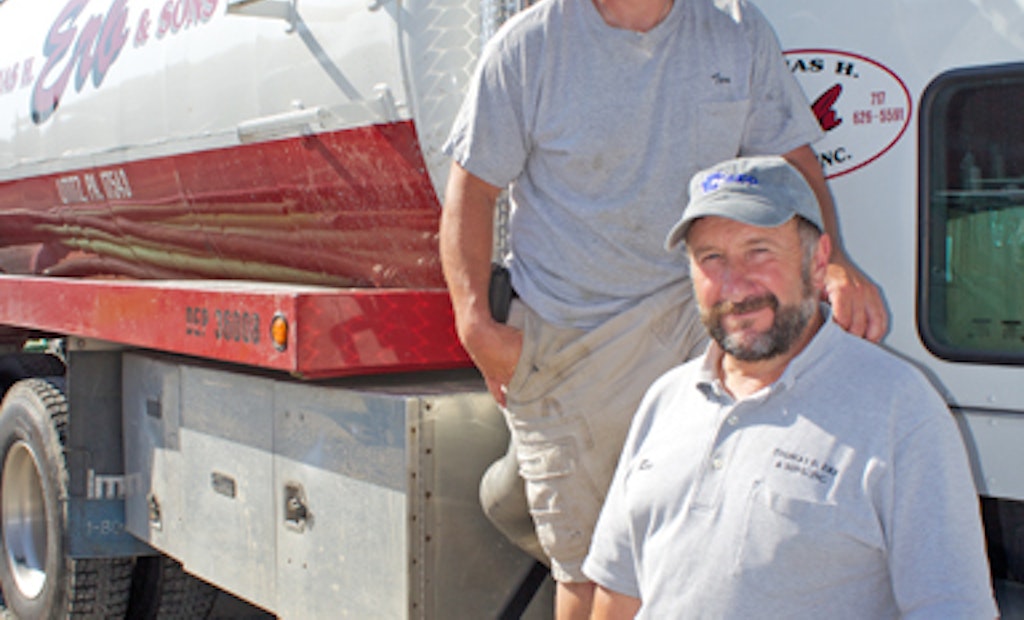
Interested in Accessories?
Get Accessories articles, news and videos right in your inbox! Sign up now.
Accessories + Get AlertsInspecting onsite systems is not for the fainthearted, as Ray Erb of Thomas H. Erb & Sons in Lititz, Pa., can attest. When the new owners of a 1970s campground hired him to evaluate the patchwork septic systems, Erb found six of them instead of three, and one of those was being abandoned.
The only documented system was seven years old and had three 2,000-gallon septic tanks. Erb’s team discovered that half of the 12-trench drainfield was dry, while liquid in the downslope trenches on the opposite side was 3 inches from the surface and ready to overflow. “The two siphons pressure-dosing the drainfield weren’t working,” he says. “Our report recommends replacing them.”
To find undocumented septic tanks, the crew used flushable transmitters (Prototek). After exposing a tank, they pushed a mini-SeeSnake (RIDGID) through the outlet to locate the rest of the system. In one case, they found two badly deteriorated 1,250-gallon concrete septic tanks. The remainder of the system passed inspection. The report recommends replacing the tanks.
When the park was at capacity, staff at a refreshment stand with lavatories reported liquid occasionally surfacing in a gravel overflow parking area and running down the driveway. The team found the building and one cabin serviced by a two-compartment, 1,000-gallon septic tank, a distribution box, and two supply lines feeding a 60- by 12- by 3-foot-deep stone-and-pipe drainfield with 3 feet of crushed stone. The report recommends upsizing the absorption bed.
A paved road covered another system serving campsites. “The septic tank had a manhole, which was our only access point,” says Erb. “The system hadn’t been used all winter, so the tank was dry.”
The crew used a hammer drill to bore through the asphalt, then they probed with a rod to determine the amount of liquid in the stone-and-pipe drainfield. It also was dry. “The system appeared to be functioning when we ran water into it,” says Erb. “We’re recommending a second evaluation when the campsites are full.”
The last system – two 2,000-gallon septic tanks with stone-and-pipe drainfield – served a shower house with lavatories. It passed inspection.
Want to learn more? Check out a full profile on Thomas H. Erb & Sons.





